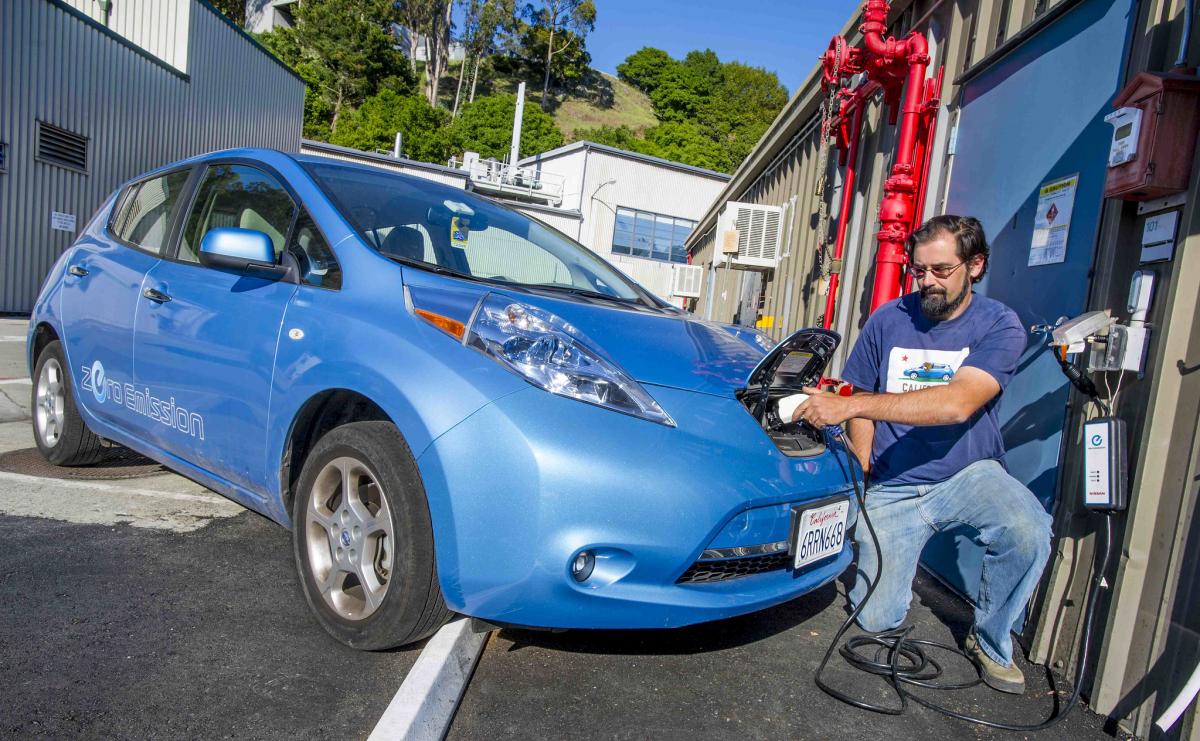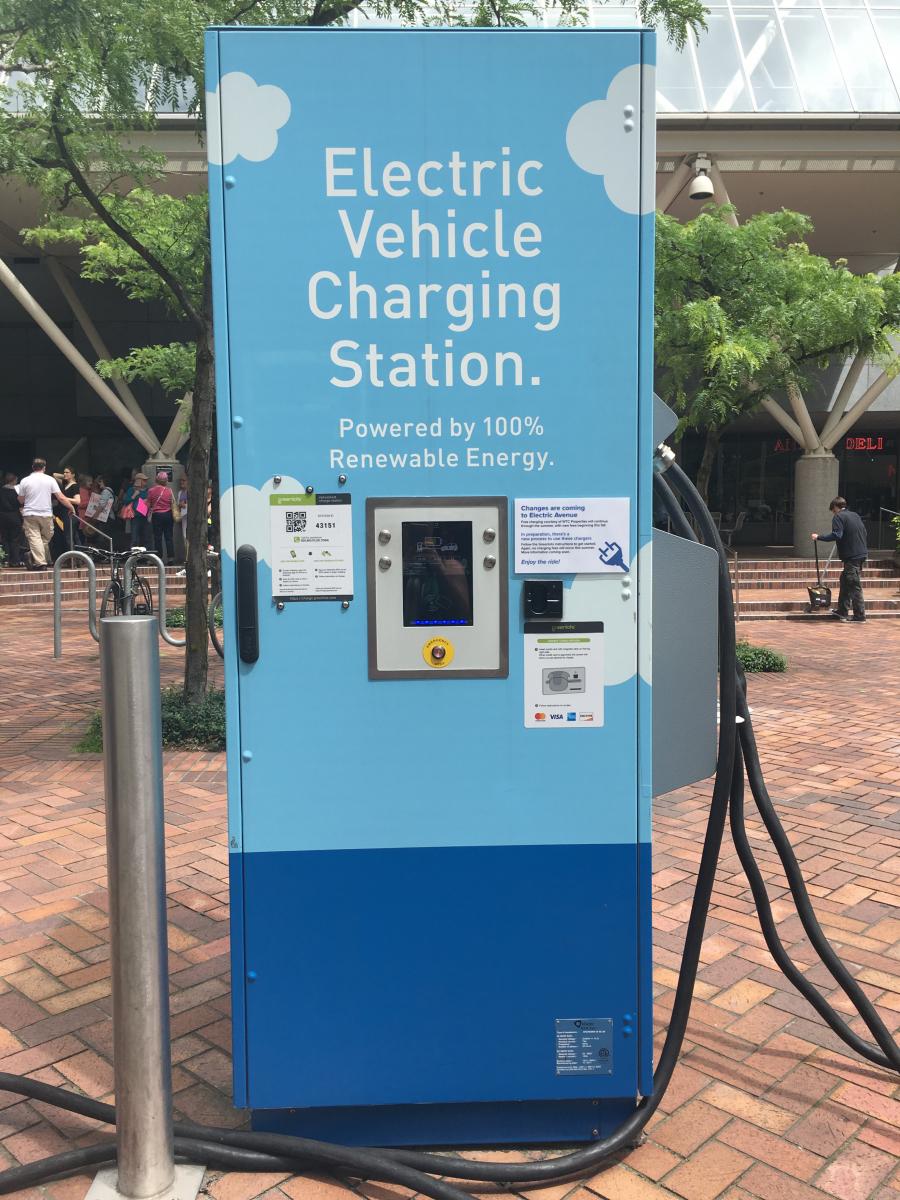Electric vehicles are fast becoming a force in the automotive industry worldwide. According to Bloomberg New Energy Finance, the global EV market is slated to grow from 2.1 million in sales in 2019, with over five million EVs on the road, to over 26 million by 2030, notwithstanding a slowdown due to the COVID-19 pandemic that economists have yet to calculate.
If you count plugin hybrid vehicles, that number jumps to over 150 million by 2030. By 2040, BNEF estimates that over half of all new vehicle sales will be electric and 31% of the global passenger fleet will be electrified.

Enticing consumers – and businesses – to buy electric
These new electric vehicles are making rapid progress in addressing consumer preferences and needs. During the next two years, it’s estimated consumers will have more than 500 new passenger EV models to choose from. Aside from the typical price considerations, potential EV buyers are most concerned about range. Manufacturers are making rapid progress in improving battery energy density which improves vehicle range. And even as the technology improves, battery costs are declining.
But bigger batteries with better range won’t be able to solve the “range anxiety” problem entirely. In fact, the third most important factor in a decision to buy an electric vehicle is the availability of charging infrastructure. A massive build out of charging stations will be necessary to maintain customer confidence in EVs and enable continuing rapid growth of the market.
Charging infrastructure presents a kind of chicken-and-egg challenge
Given the prevalence of range anxiety, if the charging infrastructure is not there, people will not buy electric vehicles, and market growth will stall. But who will invest in EV infrastructure if demand is not inevitable? According to a report by the Smart Electric Power Alliance, it’s still difficult to predict utilization rates of charging infrastructure for the relatively new EV industry, so the business case for investors is uncertain.
The best market opportunity for EV charging infrastructure may be commercial fleets – including buses, heavy trucks and light duty delivery vans. Commercial vehicles, which currently make up over half the vehicles on the road in the US, are looking for reductions in operational costs and opportunities to leverage clean transportation incentives. ID Tech Exchange reports that while electric fleet charging represents less than 5% of charging infrastructure in volume, it constitutes over 30% of the total market value of the charging industry.
EV charging infrastructure: How much do we need?
According to a recent Wood Mackenzie report published in Green Car Reports, leading EV markets will install 30 million new charging stations by 2030 in the United States. During that time, incentives will shift from policy-driven initiatives to profitability. Wood Mackenzie reports that market size for EV charging infrastructure could reach $18.6 billion by 2030.
Though Europe and China are ahead of the US in developing EV charging infrastructure, the US is expected to catch up to Europe by 2030, Wood Mackenzie says.
According to the non-profit International Council on Clean Transportation, the United States will need to invest over more than $2.2 billion from now through 2025 to in EV charging infrastructure in order to keep up with market growth.

While most of that investment will be for residential Level 2 AC chargers, a little under half will be required for public and workplace chargers, mostly in key U.S. metro areas where electric vehicles represent over 80% of the EVs sold nationwide.. Meanwhile, DC fast chargers represent only about 14% of the total market now, but people are impatient and the DC chargers are definitely much faster than the Level 2 chargers. Many experts believe the fast-charger market may need grow faster than anticipated in order to meet the demand.
EV driven growth in electricity demand is a good news, bad news story
The rapid expansion of electric vehicle markets could be a boon for electric utilities, which have been facing flatlined electricity demand over the past decade. Successful energy efficiency measures and rapid uptake of renewable energy have eroded utility revenues and challenged existing business models.
But now, the National Renewable Energy Laboratory (NREL) predicts that in their highest growth scenario, electrification of the US transportation industry could cause electricity demand to jump 38% over the next three decades. In turn, the increased demand could significantly boost electricity costs for utility customers.
The combination of increased capacity requirements and the need for new EV charging infrastructure represents both a challenge and an opportunity for utilities, according to HOMER Energy founder and UL Renewables Global Microgrid Lead Peter Lilienthal.
“While increased electricity sales will be positive for utilities, their traditional distribution infrastructure – transformers, feeders, and substations – were not built to meet the power demands of EV fast-charging stations or even Level 2 chargers with multiple ports. This is why we are so excited to have a new HOMER module to identify where a distributed power system can be a preferable distribution infrastructure upgrade.”
Meanwhile, commercial fleets, owners of commercial office buildings, cities and other public entities that want to encourage EV use could all face dramatic increases in utility demand charges stemming from EV charging stations. The Rocky Mountain Institute says regarding its analysis of office workplace charging, “EVs could increase energy costs 45 to 89% if charging is not managed.”
What is unique about the way EVs consume electricity, RMI says, is an irregular charging schedule and the tendency to spike sudden peak loads.
That means any manager of an EV charging station may potentially face significant increases in demand charges unless they incorporate payment systems and demand management, or self-generation using renewable energy.
Distributed energy systems can lower peak use and provide clean, renewable energy for EV charging infrastructure

Electrification of our transportation systems is an urgent priority if we are going to slow global warming trends. According to the Climate Group, as people in China and developing countries enthusiastically embrace the joys of driving privately owned passenger cars, the transportation sector is becoming the fastest-growing contributor to climate change, accounting for nearly 30% global energy-related greenhouse gas (GHG) emissions.
The International Renewable Energy Agency (IRENA) says that electric vehicles can counter that trend and “support variable renewable power growth through different charging schemes such as time-variable “smart charging”…and can help support a global doubling of the share of renewable energy by 2030.”
IRENA also says “ .. Battery-electric vehicles provide zero-vehicle-emissions driving (for both CO2 and pollutant emissions), but the “upstream” CO2 can be substantial…in countries with dominant coal power generation. Electric grids must be considerably decarbonised for EVs to have a CO2 advantage.”
Distributed renewable energy systems to the rescue
One solution to the triple challenge of climate change, the need for additional electrical capacity and the requirement for upgraded grid infrastructure to accommodate EV charging, is distributed renewable energy systems. These systems can add energy capacity while simultaneously helping with load management.
For example, a grid-tied solar-plus-storage system can provide self-generated electricity. With batteries and a well-designed energy management system, it can also make sure that batteries supply the required load when the sun isn’t shining. Not only do customers avoid expensive demand charges, but they get the satisfaction of knowing their cars are powered by clean energy.
Microgrids and grid-tied distributed energy systems contribute to grid modernization by helping utilities with load management through peak shaving and allocation of clean energy to the transportation sector.
HOMER Grid enables clean EV charging, integrating design tools in distributed energy modeling
In response to this challenge, the software program HOMER Grid now incorporates an EV charging modeling tool, allowing users to simulate electricity use for either on demand or smart charging. HOMER Grid makes it easy to determine what renewable energy and storage resources are needed to meet the demands of EV charging stations, to calculate the ROI of supplementing grid power with renewable energy, and to compare the cost of those investments with the use of grid power.
The on-demand charging mode in HOMER Grid allows energy designers to model what happens when vehicles are powered immediately as they drive up. The smart charging mode simulates energy flows when a car is parked over time, charging when renewable production is at its zenith, when batteries are full or when prices are lowest due to time-of-use (TOU) rates. In either case, renewable energy resources can add new capacity to our energy infrastructure and potentially cushion the demand for electricity caused by rapid adoption of electric vehicles.
Ultimately, EV charging facilities powered by distributed renewable energy offer the potential to help utilities manage loads and provide local capacity in areas where distribution feeders might not be capable of meeting the new power demands of EV charging stations. They can also play an important role in keeping electricity costs reasonable for EV owners and thus promote the electrification of our transportation industry.
Many questions remain…for upcoming articles
Stay tuned as we follow this rapidly developing marketplace. We’ll explore a host of issues, such as: What will the role of electric utilities be in building out EV infrastructure? If we follow traditional utility and regulatory timelines and business models will we be able to respond quickly enough to EV market growth? Who will pay for new EV charging facilities and who will own them? What paths and policies will allow us to electrify our transportation sector most rapidly, and forestall the gathering clouds of climate change? Be sure to join us for the EV ride.

UL Solutions HOMER Grid is a market-leading solar-plus-storage software tool for designing grid-tied distributed energy systems. With an integrated utility tariff database and a new module for electric vehicle charging stations, it optimizes peak shaving to help commercial and industrial utility customers lower their demand charges. HOMER Grid can model projects with wind and combined heat and power as well as islanded systems, helping users improve their resiliency. Explore your opportunities with HOMER Grid during a complimentary trial. Learn more and download your complimentary trial.

This is inspiring as Africa prepares for the sustainable energy future. As Pawagreen Energy we look forward to pioneering EV charging.
Hi Richard,
Thank you for your comment. Please feel free to download HOMER Grid for a free three week trial and explore how you can model EV charging as part of your distributed renewable energy system. Let us know if you need any help. https://www.homerenergy.com/products/grid/index.html I see you are from Uganda – there are quite a few projects underway there that are using HOMER to model distributed renewable energy systems – hopefully providing energy access for more people and saving money on energy costs.
All the best,
Lili Francklyn
What are the possibilites and benefits of microgrid/ PV and batteries in system 100% run by hydropower like in Norway? Hydropower is already super flexible! So why should they invest in microgrids/ solar / and PVs.
The energy is clean, cheap and flexible. What does a microgrid bring on the table.
best regards
Hi Rouven,
You are correct that hydro power is an important source of renewable energy in many locations, for the countries/regions that are lucky enough to have it. There are situations where droughts can impact hydro resources, and that is a risk with climate change. Also in some locations dams can cause environmental or geopolitical problems (think Ethiopia and the Nile) So diversity is a good thing in principle.
All the best,
Lili Francklyn